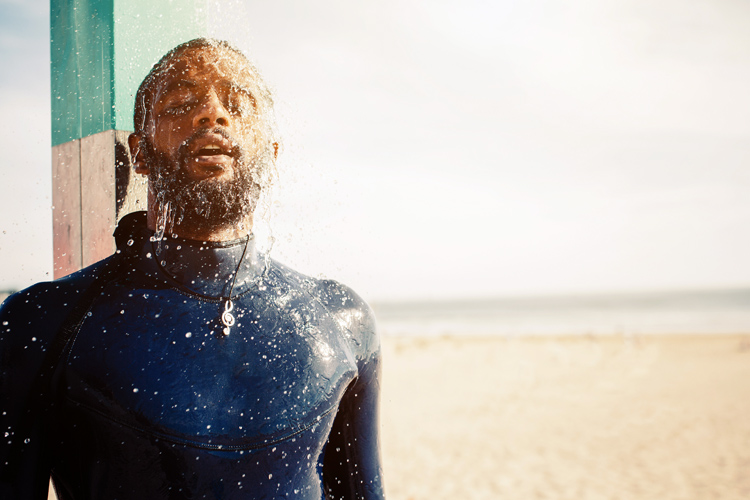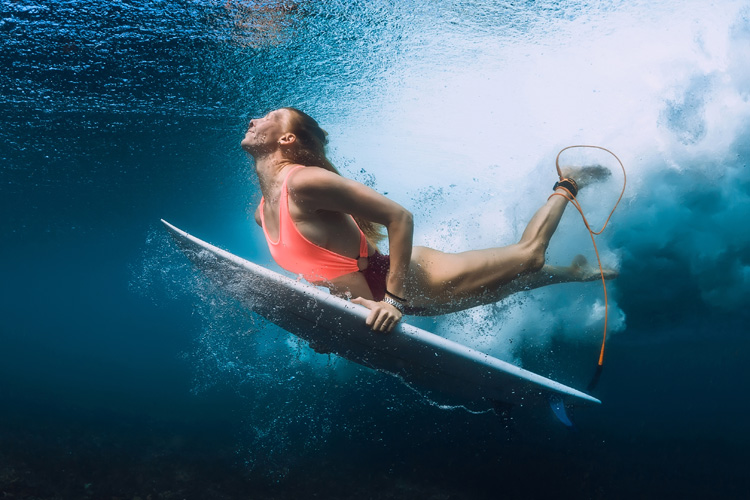Do you need to get rid of water trapped inside your ear after a surfing session? Here are seven simple tips for draining fluid from the ear canal.
It's uncomfortable, annoying, potentially harmful, and may get stuck there for days.
The sensation of water in your ear is a common issue within the surfing, swimming, and diving communities.
However, any exposure to water - showers and rain, for example - may result in a tickling sensation inside your ears and muffled hearing.
It could've been caused by earwax buildup, an infection, middle ear congestion, or even surfer's ear (exostosis).
How do you know you've got water trapped inside your ears?
The symptoms are quite clear:
- Muffled sounds;
- The feeling of plugged-up ears;
- Runny nose;
- Ear pain;
- Ringing;
- Sore throat;
- Hearing loss;
- Loss of balance;
There are several techniques to effectively get water out of your ear at home, especially after a more or less prolonged time surfing or swimming.

1. The Gravity/Jiggling Technique
The simplest, easiest, and least invasive way of getting rid of water in your ear canal is to lean over and let gravity drain the unpleasant liquid.
You can do this by lying parallel to the ground with your ear facing the floor.
Then, tilt your head and jiggle the earlobe several times. Finally, use a cotton swab to remove water that could be near the ear's entrance.
Sometimes, this technique works; many times, it doesn't.
2. The Valsalva Maneuver
This trick gets air through your eustachian tube into the middle ear space.
To do so, close your mouth, plug your nose, and moderately blow it in an attempt to normalize ear pressure.
The Valsalva maneuver is often used to pop ears after scuba diving and flying.
3. The Vacuum Technique
Put the palm of your hand over your congested ear. Press it for a few seconds to encourage suction.
Repeat the process several times until you feel there's no more water inside.
4. The Hairdryer Technique
Another common technique is the hairdryer.
The trick is to use its low heat setting to try to dry off the water inside your ear at a safe distance.
Reducing the amount of water a bit will help the rest come out on their own.
One of the advantages of this technique is that it may solve the problem without needing to stick anything inside a sensitive organ of the human body.

5. The Pulling Technique
You can also pull back on the outer part of the ear (pinna). To do so, reach around the back of your head and pull it with your opposite hand.
It straightens the ear canal out, allowing the water to get out.
6. The Chew and Yawn Technique
Try chewing gum or yawning consecutively, and then shake your head vigorously.
While moving your mouth, you're relieving tension in the eustachian tubes. By opening them up, you may help release the trapped water.
7. The Chemical Technique
If none of the above tips helps drain water from your ears, try alcohol-based ear drops. They will reduce moisture in your ear canal.
They are sold over-the-counter (OTC) and will keep your ears clean and unobstructed.
You may prevent water from getting trapped inside your ear using high-quality ear plugs or a swim cap.
But avoid tissues, corners of a towel, and other objects.
Otherwise, you may inadvertently damage the eardrum or introduce an infection into the outer ear, causing an otitis externa.
Finally, make sure to always dry your ears thoroughly after a surfing or swimming session.
If you have not surfed, swam, or showered recently and feel that unpleasant sensation of water inside your ear, you may have developed a middle or outer ear infection.
If that's the case, visit an otolaryngologist as quickly as possible.
